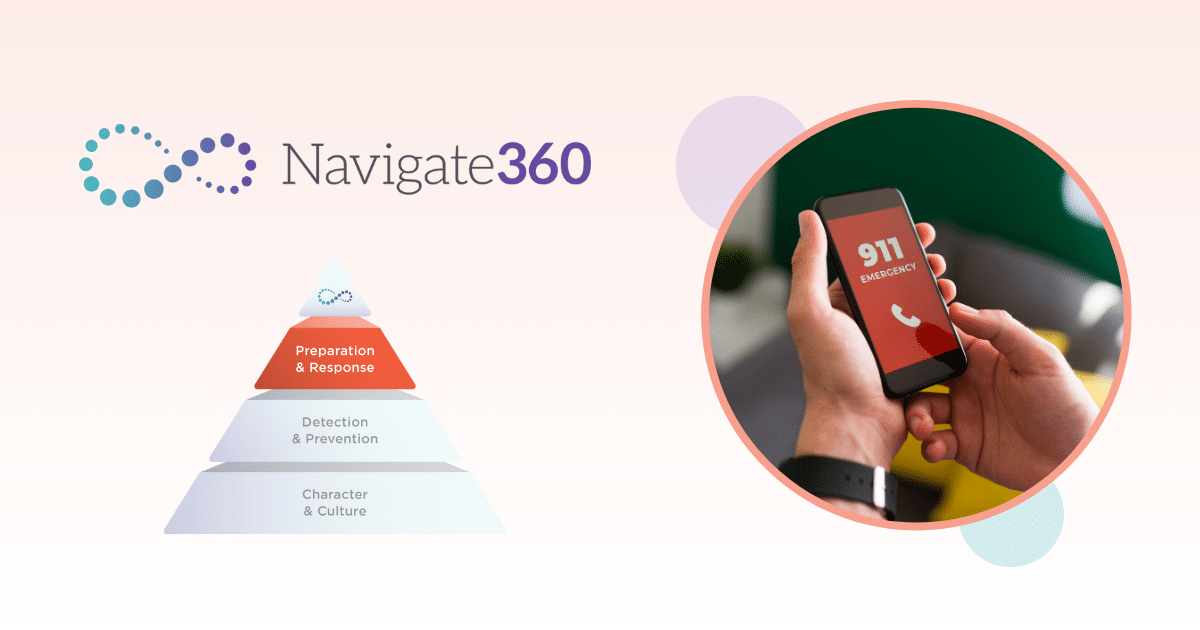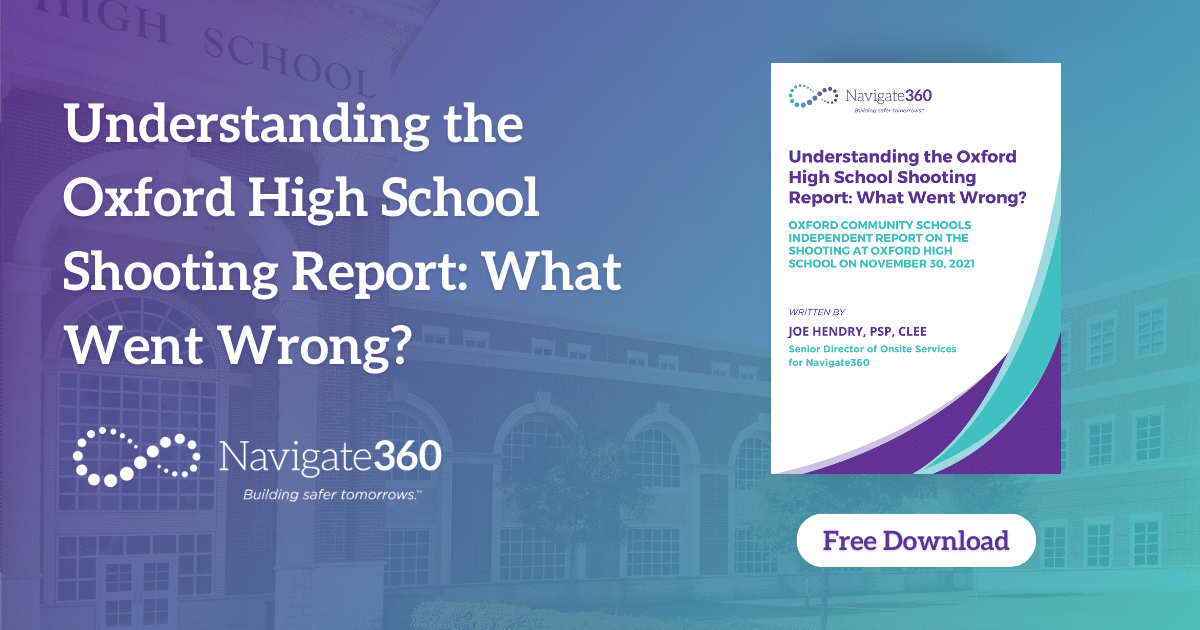Situational awareness—being fully cognizant of your surroundings, the people in it, and your situation—is vital for preventing and responding to an immediate threat to the school. While School Resource Officers (SRO) in your district are likely trained in this concept, situational awareness is an important safety skill, and life skill, for all members of your staff. Recognizing, assessing, and responding to threats are critical first steps to surviving a violent critical incident like an active shooter incident.
ALICE Training ® is a critical resource for improving school safety within your district. ALICE is a research-supported, proactive, option-based active shooter response training program that empowers individuals of all ages and abilities to participate in their own survival in the face of violence. The ALICE program centers on situational awareness training because gathered observations can help individuals understand which active response strategies can minimize harm during a critical incident and contribute to saving their lives.
What Does Situational Awareness Look Like in a School Setting?
In the context of education, situational awareness involves staying mindful of the individuals present on school grounds. Given that most threats are human-caused, schools must always be aware of who is on campus, including students, employees, vendors, and visitors. It is crucial to promptly identify anyone who shouldn’t be there or is exhibiting behavior that triggers internal alarms—such as displaying anger or intense demeanor or wearing inappropriately heavy clothing for the weather conditions. Additionally, any suspicious objects, like an unattended bag or an unidentified vehicle that appears out of place, should be assessed as potential threats.
Situational awareness training emphasizes the significance of taking these danger notifications seriously. This ensures that you are well-prepared to make informed decisions in responding to potential threats should they arise.
Situational Awareness Includes These Three Essential Actions:
- Recognition – Noticing something unusual that could be a threat
- Assessment – Analyzing the situation and considering your response options
- Response – Taking direct action to increase the chances of survival and minimize harm
It is essential for all members of the school district, including SROs, school and district leaders, teachers, and staff, to practice situational awareness. This ensures a comprehensive understanding of all activities, allowing for the assessment of potential threats.
Situational Awareness & Threat Response Training in Schools
Though threats to school safety are rare, they do happen. Every dangerous situation is unique and requires an appropriate response. That is to say, there is no one-size-fits-all response to immediate danger. While lockdown drills have a specific purpose, relying solely on lockdown response endangers individuals by suppressing their natural flight instinct. This confines them to spaces where they could become vulnerable targets. Lockdown-only strategies no longer align with the recommended threat-response of federal and state agencies.
ALICE Training ® is built upon a multi-option response model that is supported by research and tailored to the individual needs of schools within your district. The program blends in-person and online trauma-informed and age-and-ability-appropriate training for your faculty, staff, and students.
The practical benefits of ALICE Training® include enhancing individuals’ decision-making abilities and promoting calmness under pressure. Participants also learn to work together to effectively minimize harm during crises. Situation awareness plays a critical role in ALICE’s multi-option response training, directly supporting the key response options provided in ALICE Training®.
How Situational Awareness Supports ALICE Training®
There are five essential responses within ALICE Training ® that can be used in any order. They are Alert, Lockdown, Inform, Counter, and Evacuate. These letters make up the easy-to-remember ALICE acronym. To illustrate the importance of situational awareness training, we’ll delve into the role it plays a role in each of the ALICE essential responses.
Alert
Being fully aware of one’s surroundings is at the heart of situational awareness. Awareness includes recognizing suspicious persons or packages and knowing where the exits are inside a building. Alert is also about overcoming denial and accepting reality. If someone is behaving suspiciously or there’s a smell or sound that doesn’t feel right, it’s crucial to take the threat seriously to make the right survival decisions. A speedy response can save lives.
Lockdown
As previously noted, lockdown-only threat responses are no longer the preferred method in active shooter incidents. However, enhanced lockdown remains necessary in specific situations, particularly when the assailant is nearby and evacuation isn’t feasible. During a lockdown, situational awareness involves understanding the door’s operation and identifying nearby objects for barricading it.
Inform
Knowing exactly where the threat is and communicating that information to others (when safe to do so) is vital to saving lives. For instance, if a shooter is known to be in a specific area of the building, occupants in another section can evacuate. Situational awareness includes informing employees, law enforcement, and first responders of the incident, per the district’s emergency response plan.
Counter
Situational awareness training includes taking stock of objects that are within reach and can be used to thwart an attack. To be clear, Counter does not mean to directly confront the intruder. Rather, the goal is to create noise, movement, distance, and distractions to confound the shooter. This breaks their concentration, making it harder for them to hit a target. Knowing what items are available and being aware of one’s own physical capabilities could provide a last-resort response option.
Evacuate
In this response, situational awareness involves knowing entry points to a building and considering non-traditional escape methods in an emergency. Windows, for example, can be opened or broken. Knowing how to properly break the glass (a valuable skill taught by ALICE Training ®) may provide the best chance of escaping.
Preparedness Starts Here: Equip Your Schools for the Unthinkable
Free eBook
This eBook addresses emergency planning for a variety of scenarios. In it, we emphasize the ability of technology to streamline response efforts, facilitate communication, and minimize disruptions. We also address the reality of violent critical incidents while highlighting the effective, options-based response we offer through ALICE Training ®.
Emergencies aren’t predictable, but training and preparation are within our realm of control. Get started today by downloading your free copy of our eBook!




